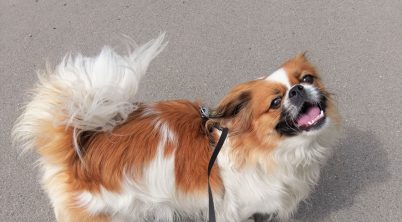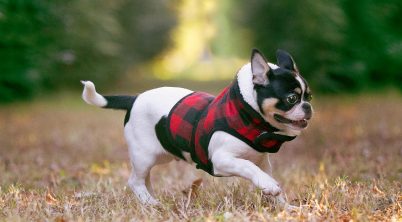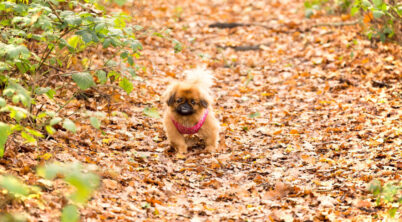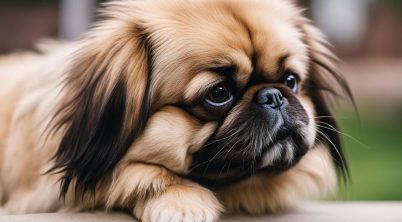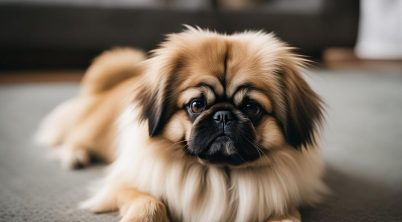Pekingese dogs are adored for their distinctive lion-like mane and charming flat faces, but their beautiful coat can also be a source of concern, particularly when it comes to skin health. Dry skin in Pekingese is a common issue that pet owners need to be aware of. This condition not only affects the aesthetic appeal of their luxurious fur but can also lead to discomfort and health issues for the dog. Dry skin might manifest as flakiness, itchiness, or even lead to more serious skin problems if left unaddressed.
It is essential to understand the underlying causes of dry skin in Pekingese to effectively prevent and treat it. Factors like poor nutrition, insufficient grooming, environmental stressors, and underlying health issues can all contribute to skin dryness. Providing a well-balanced diet rich in essential fatty acids is a fundamental step in maintaining healthy skin and coat. Regular grooming sessions that involve gentle brushing can also play a major role in stimulating natural oil production in the skin, which helps to keep it hydrated.
In addition to diet and grooming, pet owners should be cautious about over-bathing their Pekingese, as this can strip away natural oils from the skin and exacerbate dryness. When baths are necessary, using a mild, moisturizing shampoo designed for dogs can help preserve the skin’s moisture levels. Being proactive about skin care can help manage or even prevent the discomfort of dry skin in these beloved dogs, ensuring they remain as healthy and comfortable as possible.
Table of Contents
Understanding Pekingese Coat and Skin
The Pekingese breed exhibits a distinct coat and skin that require specific care. Understanding the peculiarities of their outer coat, undercoat, and potential skin issues is crucial for maintaining their well-being.
Coat Characteristics
The Pekingese possesses a luxurious double coat, which consists of a thick, soft undercoat and a long, straight outer coat. The outer coat forms a lion-like mane around their neck. This coat is not only a defining characteristic but also serves as protection against various weather conditions.
- Undercoat: A dense layer that provides insulation.
- Outer Coat: Longer hairs that help to repel debris and protect against the elements.
- Lion-Like Mane: More prominent around the neck and shoulders, adding to their distinctive appearance.
Regular grooming is imperative to prevent matting and to manage shedding. It’s important to note that the Pekingese coat can trap dirt and debris, hence meticulous grooming is essential to maintain skin and coat health.
Common Skin Issues
Pekingese dogs may develop skin conditions that owners should be vigilant about:
- Skin Fold Dermatitis: Occurs in the skin folds, often due to moisture, and can lead to infection if not kept clean and dry.
- Dry Skin: Can be exacerbated by over-bathing or the use of harsh shampoos. Using a mild, hypoallergenic shampoo is recommended.
Owners should monitor for excessive itching and scratching, which can be indicative of underlying skin issues, such as allergies or infections.
Genetic Health Problems
Pekingese can be susceptible to specific genetic health problems that affect their skin and coat:
- Coat: Some may inherit a coat that is more prone to matting and tangling, requiring extra grooming.
- Skin Fold Dermatitis: A genetic predisposition, especially in Pekingese with more pronounced skin folds.
Awareness of these genetic health problems is essential for prevention and early intervention when necessary. Regular check-ups with a veterinarian can help in the early identification and treatment of any emerging issues.
Proper Nutrition and Diet for Healthy Skin
A Pekingese’s healthy skin is largely influenced by its diet, particularly the intake of essential fatty acids and maintaining hydration through a balanced diet.
Essential Fatty Acids
Essential fatty acids, specifically Omega-3 and Omega-6, are crucial for a Pekingese’s skin health. They serve as the building blocks for skin cells and help maintain the skin’s moisture barrier. A diet lacking these nutrients can lead to dry, flaky skin.
- Sources of Essential Fatty Acids:
- Flaxseed oil
- Fish oil
- Specially formulated pet foods with added Omega-3 and Omega-6
It is advisable to include a fatty acid supplement if their regular diet does not sufficiently provide these nutrients. Fish oil is a common supplement option that can be added to the Pekingese’s diet, as it is rich in Omega-3.
Hydration and Diet Balance
Hydration, alongside a balanced diet, plays a pivotal role in skin health. A Pekingese’s diet should include the right balance of nutrients, as well as adequate water intake to promote healthy skin and coat.
- Key Components of a Balanced Diet:
- Proteins: Serve as the main component for repairing and renewing skin tissues.
- Carbohydrates: Provide energy and help in the absorption of fatty acids.
- Vitamins and Minerals: Aid in protecting skin cells from damage and support skin hydration.
Ensuring that a Pekingese has constant access to fresh, clean water is essential for maintaining good hydration and, consequently, healthy skin.
Grooming and Daily Care
Grooming a Pekingese requires a consistent routine that addresses their long, luxurious coat and keeps dry skin at bay. Key aspects include regular brushing, using the right shampoo during baths, and effectively handling mats and tangles.
Regular Brushing
For the Pekingese’s coat, daily brushing is indispensable. It stimulates the natural oils in their skin, distributing them throughout their fur, which not only maintains a lustrous sheen but also prevents dryness. The preferred tools are a bristle brush for the topcoat and a pin brush or metal comb for the undercoat to ensure a thorough grooming session.
Bathing and Shampoo Selection
Bathing a Pekingese should not be frequent, as it can strip their skin and fur of natural oils, leading to dryness. When bathing is necessary, always use a dog-specific shampoo that is rich in natural ingredients and free of harsh chemicals. A gentle conditioner can also be beneficial to keep their coat soft and hydrated.
Dealing with Matting and Tangles
Matting and tangles can be painful for the dog and can trap dirt leading to skin irritation. To prevent this, softly brush out any tangles before they become mats. In cases of severe matting, a detangling spray or conditioner can aid in carefully working through the knots. It’s essential to address tangles as they appear to keep the Pekingese’s coat and skin healthy.
Health Concerns Related to Skin Conditions
Dry skin in Pekingese can lead to a range of health concerns, necessitating attention from a veterinarian. It’s important to understand the causes contributing to skin conditions, and the symptoms that may accompany these dermatological issues.
Infections and Parasites
Pekingese dogs may suffer from skin infections caused by bacteria or fungi. These organisms thrive in the breed’s thick undercoat, particularly if not groomed properly. Symptoms of infections can include scratching, redness, and inflammation. Parasitic infestations such as mites can lead to conditions like dermatitis, exacerbating skin dryness and irritation.
Allergies and Inflammatory Conditions
Allergies are a prevalent cause of skin conditions in Pekingese, potentially stemming from environmental triggers or certain foods. Inflammation due to allergic reactions can cause chronic discomfort and increase stress levels in these dogs. Regular check-ups with a veterinarian can help pinpoint the cause of allergies and manage symptoms effectively.
Symptomatic Red Flags
Early detection of skin-related health concerns is crucial. Owners should monitor for signs such as persistent scratching, hair loss, scabbing, and redness. Systemic health issues like hypothyroidism could manifest through skin problems and may be associated with other complications like ear infections and eye problems. Prompt veterinary advice is essential when such symptoms are observed.
Managing and Treating Dry Skin
Dry skin in Pekingese can cause discomfort and lead to excessive shedding and itching. By implementing effective home treatments, understanding when professional care is necessary, and utilizing appropriate medication and supplements, owners can manage their Pekingese’s dry skin effectively.
Home Treatments
To address the issue of dry skin, regular grooming is essential. Brushing the coat not only removes loose fur but also stimulates the skin, promoting the distribution of natural oils. Bathing should be done with a mild, dog-specific shampoo and followed by applying a dog-formulated moisturizer to keep their skin hydrated. Another home remedy includes the application of corn starch, which helps in keeping the skin dry and preventing further irritation.
When to See a Veterinarian
If a Pekingese’s skin condition does not improve with basic home care, or if the dog exhibits signs of severe discomfort, such as constant scratching or skin infections, it’s time to consult a veterinarian. This professional can assess whether there’s an underlying issue affecting the dog’s immune system or skin health, necessitating specific treatments.
Medication and Supplements
Veterinarians may prescribe medications for treating any bacterial or fungal skin infections. For general skin health, supplements containing Omega-3, Omega-6, and Omega-9 fatty acids from sources like krill oil can be beneficial. These supplements support the skin’s barrier and reduce inflammation, potentially relieving itchy skin. The inclusion of natural ingredients like Reishi mushrooms in the diet may also help, as they contain compounds that reduce histamine release, which in turn minimizes allergic reactions and itchiness.


